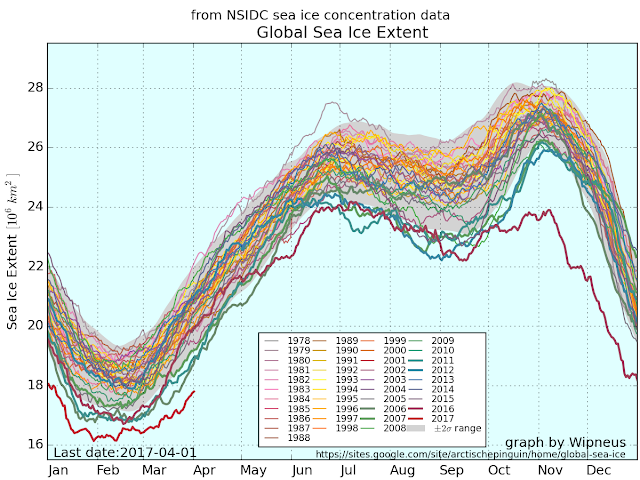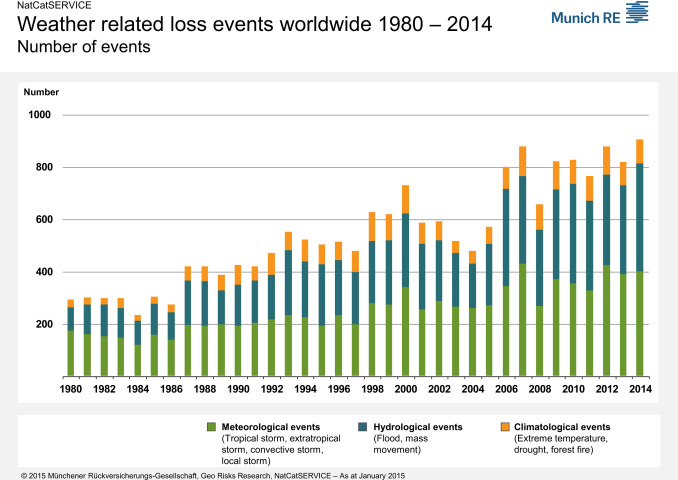Old Rocks
Diamond Member
The Gulf Stream is heating up as the 2017 El Niño strengthens, fueled by record low global sea ice extent, which means that a lot of extra heat is getting absorbed globally (image below, by Wipneus).

Arctic News
The amount of sea ice continues to be well below any previous record since we started measuring it by satellite.

Arctic News
The amount of sea ice continues to be well below any previous record since we started measuring it by satellite.






